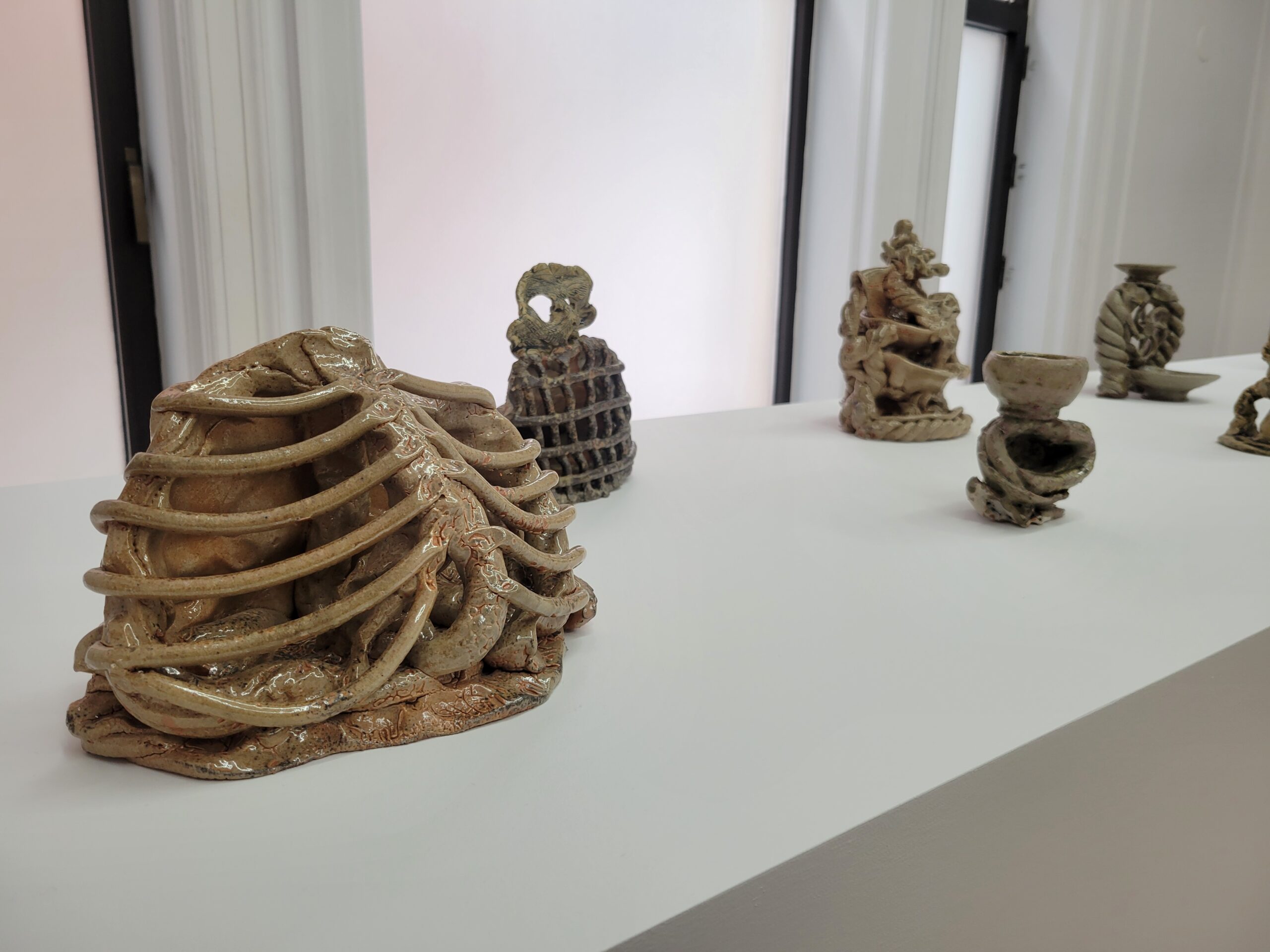Embracing age-old methods to create new work that feels ancient.
Trevor Baird is a Montréal-based artist with a BFA in ceramics from Concordia University whose works have been exhibited domestically and internationally. His current exhibition Sunkissed is now on view at Pangée, a gallery located inside a historic 100-year-old building, formerly known as the Czech Consulate. The gallery directly overlooks Mont-Royal park, making it a favoured destination for the art community of Montréal.
Upon entering the building, a fluorescent sign bathes the entrance in warm, red light and directs visitors upstairs into the gallery space. The bright and sunlit space smells of fresh oil paint, initially gravitating the visitors toward Delphine Hennelly’s whimsical exhibition, Behind the Scenes.
In the adjacent room, Trever Baird’s exhibition features a long podium in the centre of space which displays a collection of wood-fired stoneware works. This new body of work marks a significant departure from his previous method of working, for Baird is embracing a new approach to ceramics. “It’s been a while since I’ve shown and have completely rethought my entire practice since Covid,” Baird wrote in a recent post on Instagram, “moving away from a more technical practice to an intuitive one took a long time to understand, but I’m so much more satisfied with this work than I have been in the past.”
The collection overall has the distinct, rustic quality of archeological discoveries, leading the viewer to question whether they are looking at contemporary artworks or antiquities. In the poignant words from artist Rebecca Storm’s accompanying exhibition text, “Tarnished, at times seeming to have surrendered to erosion, or to the slow creep of lichen, [the ceramics of Trevor Baird] bear ciphers of antiquity, teasing the viewer into speculation. Have I been newly created, they ask, or have I been found?”
For example, the repeated motif of the ribcage (Arca Mundi, 2023) may remind the viewer of fossilized human remains, preserved by the earth. “Ribs are the artist’s interpretation of the alchemical concept of the vessel as the symbol for the soul,” Storm wrote. The rib cage both protects and metaphorically imprisons the heart—the presumed locus of the human soul. Baird’s “remains” are imbued with a sense of the spirit of the body they perhaps once belonged to.
Sunkissed will be on view at Pangée from Jan. 20 to March 2.
